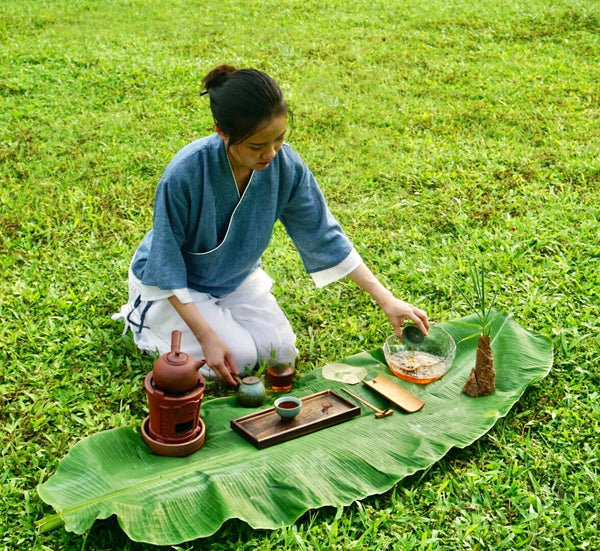There are many types of Puer tea, not only raw and ripe Pu-erh tea, but also new tea (within 5 years) and old tea (plus 5 years). In addition, the differences between teas with different tightness and tenderness are still quite large.

How to brew new Puerh tea?
New raw Pu erh tea: New raw Pu'er cha is closer to green tea in nature. you can use tea to water ratio of 1:25-1:30. When brewing, you should avoid the "cooked soup taste", so the water temperature should be slightly lower and the soup should be brewed quickly. Especially for raw tea with relatively tender raw materials, the water temperature can be about 95℃(194 ºF) when brewing (after the water boils, you can let it stand for a while to let the heat dissipate.
Do not pour boiling water directly on the tea leaves to avoid scalding the fresh leaves and making the tea soup stuffy, which will affect the freshness of the tea soup. At the same time, after the soup is brewed, you can slightly open the lid to dissipate heat, which can also keep the tea soup fresh.

In terms of utensils, porcelain Gaiwan is more suitable. This is because Gaiwan has a fine texture, thick glaze, and no odor, which is an advantage. In other words, it can more truly present the essential characteristics of tea, such as the purity of aroma and taste. New ripe Puerh: you can use tea to water ratio of 1:20. Because the newly ripened Puer tea has been fermented for a long time, the water temperature must reach 100℃ when brewing it to bring out the smooth, sweet, fragrant and mellow characteristics of the ripe tea. However, the brewing time should not be too long to avoid bitterness.
 Some teas with a slightly lighter degree of fermentation can also be half-opened in the first three brews to maintain the freshness and sweetness of the tea soup. At the same time, opening the lid is also conducive to the release of the ripe taste. Using Yixing purple clay Zisha teapot to brew newly ripe Pu erh tea can absorb the "pile flavor" and other miscellaneous flavors and odors.
Some teas with a slightly lighter degree of fermentation can also be half-opened in the first three brews to maintain the freshness and sweetness of the tea soup. At the same time, opening the lid is also conducive to the release of the ripe taste. Using Yixing purple clay Zisha teapot to brew newly ripe Pu erh tea can absorb the "pile flavor" and other miscellaneous flavors and odors.
How to brew aged Puerh tea?
For old tea, whether it is raw tea or ripe Pu-erh tea, it is generally required to wake up the tea and brew it at high temperature, which is conducive to the release of the aged flavor. Tea to water ratio: 1:15-1:20. When you pour water inside teapot, please keep your kettle close to the teapot to have a gentle and slow water stream.

It is best to use a Yixing purple clay Zisha teapot for brewing old tea. The temperature needs to be kept high, and the purple clay teapot has a good heat preservation effect. It can also be used to keep the temperature continuously by "pouring boiling water on the teapot", which cannot be done by Gaiwan due to their structure. If the old tea is accidentally contaminated with other odors during storage, the purple clay teapot can absorb the odor due to its double pore structure, which has a certain "correction" ability.
















